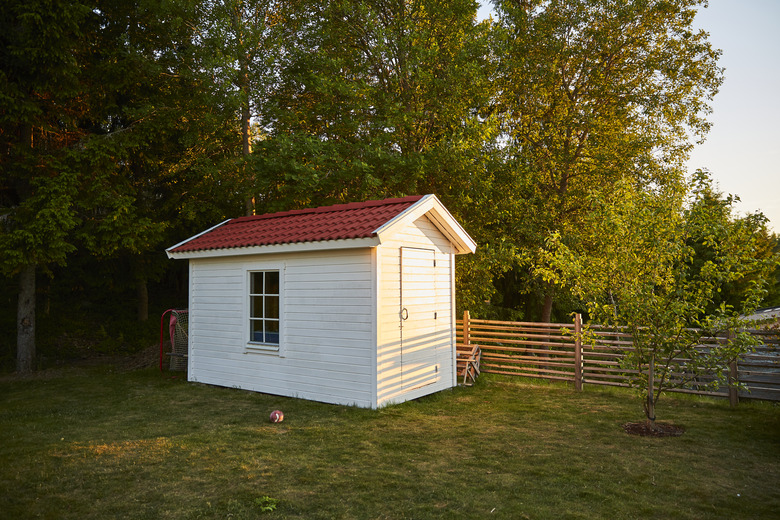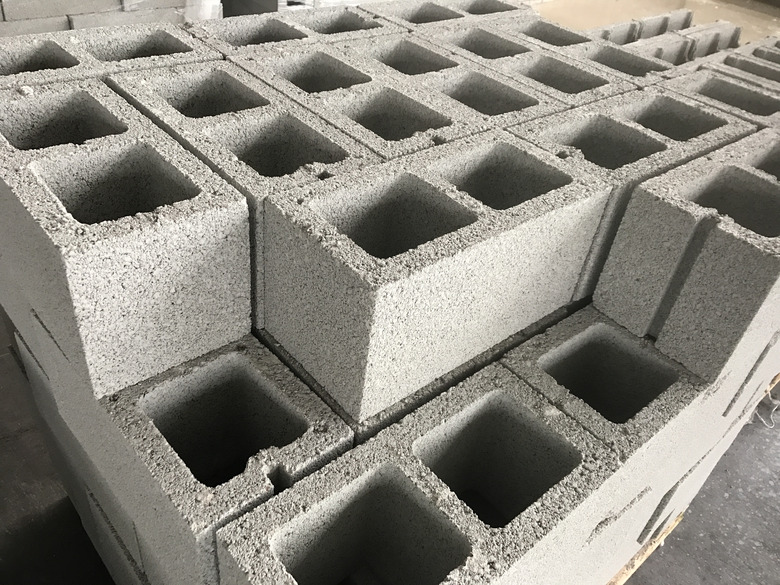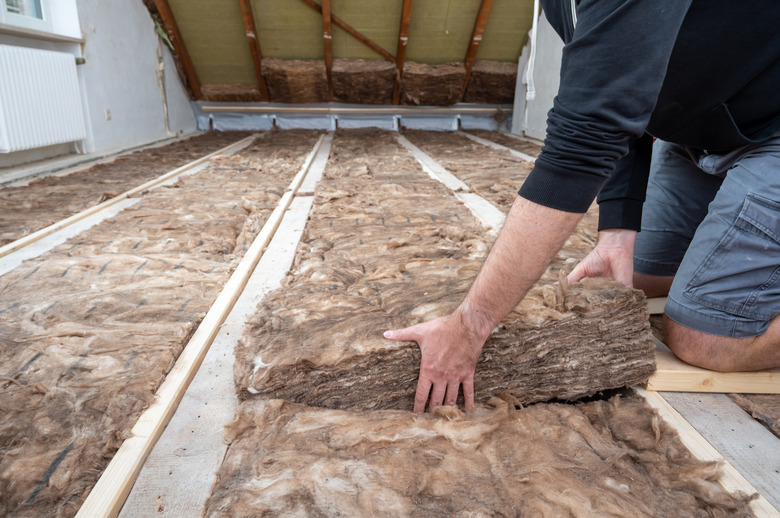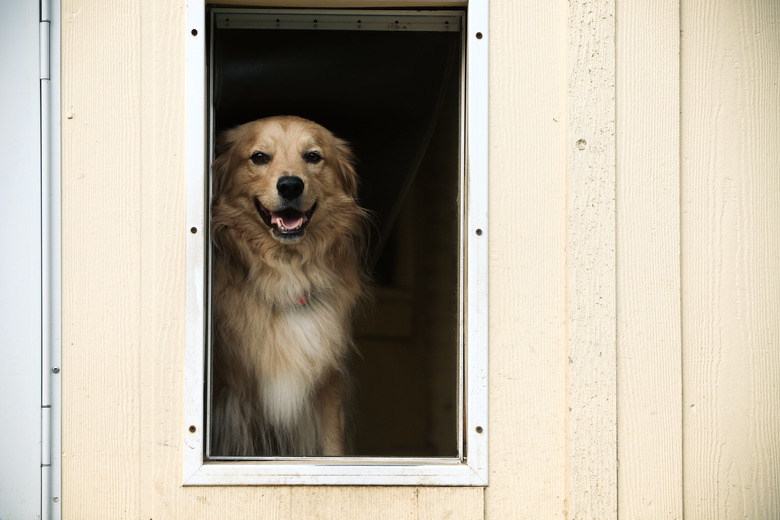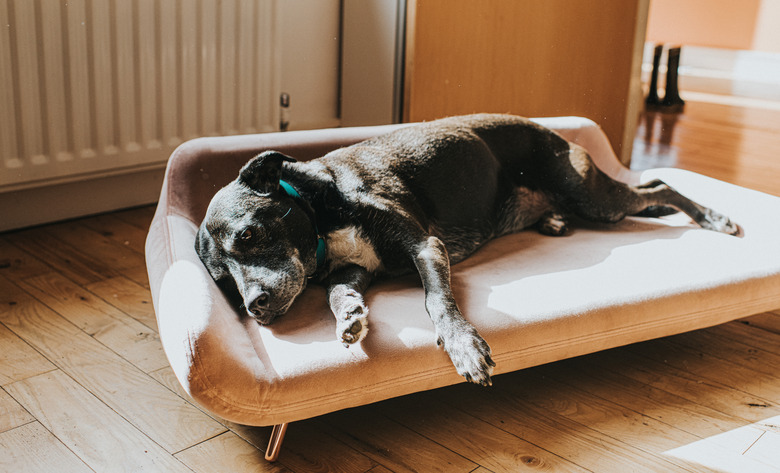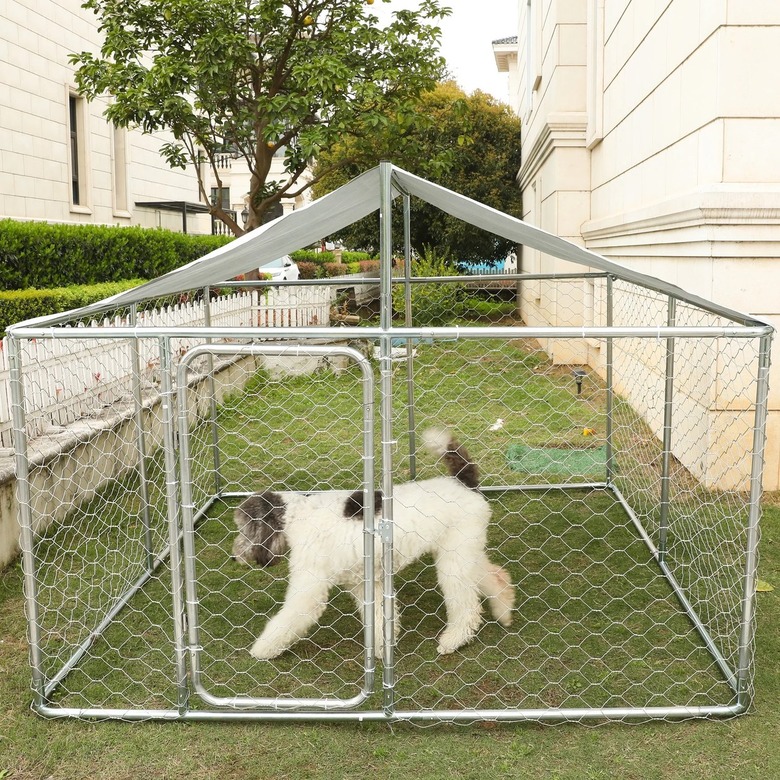How To Convert A Shed To A Doghouse
With a few updates, an unused shed can make a spacious doghouse, especially for larger pets. Typically, dog houses are sized just large enough for the dog to stand, lie and turn around in — small enough that the dog's body heat keeps the space warm.
But most storage sheds are significantly larger. Making up for this issue will account for the bulk of your remodeling work. The extra space also allows for storage of dog food and supplies. Position the shed in a shaded area of your yard for the best results, and check your local laws regarding doghouses to ensure the structure is in compliance.
1. Raise the Shed
1. Raise the Shed
Allowing the shed to sit directly on the ground will increase moisture in the retrofitted dog house year-round, making it difficult for your dog to stay warm in the winter. Build a raised base for the shed, at least 4 inches high, and secure the shed to the base. Creating a base of cinder blocks is also an option. Depending on the height of the shed and the size of your dog, you may need to construct a ramp so he or she can comfortably enter and exit.
2. Add Insulation for Climate Control
2. Add Insulation for Climate Control
Basic insulation is essential to your dog's comfort and health. With a wood shed, secure blanket fiberglass insulation between the studs, and screw half-inch plywood over it. Insulate a plastic or metal shed with reflective double-foil insulation, stapling it to the walls and covering seams with duct tape.
If your area is prone to cold weather, consider wiring and installing a heating bulb inside the shed in addition to the insulation you install for more warmth. Install vents in the roof to keep the space cool during the summer, louvering them to prevent rain from getting inside.
3. Make Dog-Friendly Entrances
3. Make Dog-Friendly Entrances
Sheds have people-friendly doors that allow you to get in and out of the new dog house to clean bedding and check for dangers, but most dogs fail at opening a door on their own. A quick fix for a shed involves leaving the doors open when the dog is using the dog house and hanging a tarp or burlap over the entrance. This prevents wind and rain from making their way into the shed while allowing easy access for your pet. A more attractive option might also be to install a dog door on the back end of the shed and keep the primary doors closed.
4. Outfit the Interior
4. Outfit the Interior
Once you're done updating the shed so it functions as a dog house, ensure that the inside is comfortable for your pet. Fill the floor with wood chips or straw to keep the area clean and dry, and place old blankets, sheets, pillows, or dog beds over the bedding. Alternatively, a pile of old blankets and a dog bed replace the need for wood chips or straw, but make sure they don't get wet as this can cause your dog to freeze in cold weather.
Utilize the upper area of the shed for storage. Install shelving close to the roof, ensuring that it's high enough so your dog can't reach it. Store food, toys, and extra blankets here, keeping everything in plastic bins to protect them from bugs and moisture.
5. Enhance the Exterior
5. Enhance the Exterior
If the outdoor shed isn't located in a fenced yard, add a dog run to the shed, positioning it so it's open to the door the dog uses. This allows your pet to relieve themselves as needed and relax in fresh air when it's too hot to stay in the shed.
When your only option is to place the shed in an uncovered area, install an extra-long run and cover half of it with a tarp or similar covering to provide shade. The run needs to be securely attached to the shed so your dog can't slip out. Set up a platform for food and water bowls near the entrance; while you can put them inside, the dog may be more prone to tipping them over, spilling water all over fresh bedding.
